Every homeowner who decides to conduct an autonomous water supply system on a personal plot should be aware that any use of the subsoil of the land is taxed or excise by state authorities. Artesian wells are also among the riches; if the well is sandy or Abyssinian, you do not need to pay tax.
Do I need to pay tax on wells and boreholes in private houses
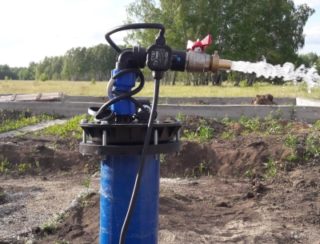
To use water resources on a legal basis, citizens and entrepreneurs must obtain a license from the executive authorities. The definition of a well excise tax means a quarterly transfer of funds in favor of the state.
Each source must have its own technical passport, where all its parameters and setting data are recorded, which were transferred by the owners at the stage of construction of an artesian well to the Department for Supervision of the Use of Subsoil of the Russian Federation. Some wells have restrictions - homeowners can use limited volumes. Paying for a water well on your site is required if the source has the following technical characteristics:
- The depth of the aquifer varies between 40-250 meters.
- High concentration of natural salts and minerals in well water.
- A mine that has been drilled into the lower layers of an aquifer.
- The results of laboratory studies of a sample of water showed that it does not contain metal impurities, it is soft and clean.
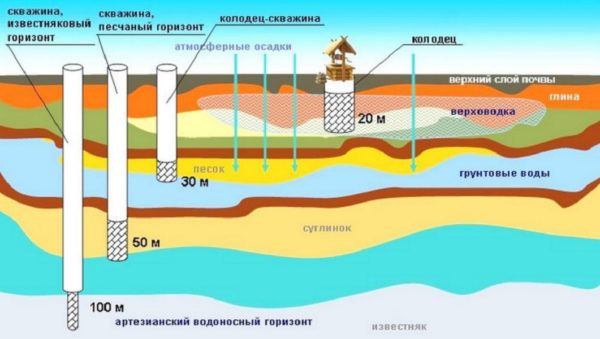
In fact, the source of taxation is water, not the source itself.
When sources are not taxed

Not in all cases natural sources are taxed by the state. It is absent under the following conditions:
- The water intake was erected at a summer cottage or a personal plot.
- There is no business activity by the homeowners.
- Consumption is calculated for residents of the house, watering animals and watering.
- Water intake occurs only from the first aquifer (as a rule, its depth does not exceed 30-40 meters).
The owners of summer cottages should not worry that they will have to pay excise tax for watering their vegetables and fruits. But it is possible that in the near future something will change, the authorities regularly make changes to the regulatory laws.
Governing laws
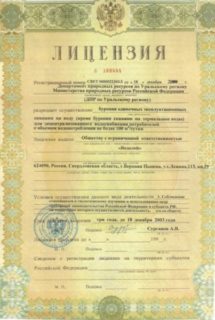
Extraction of water resources is regulated by the Law on Subsoil No. 2395-1. It was adopted in 1992. The Resolution of the Supreme Soviet of the Russian Federation No. 3314-1 sets out the licensing procedure, as well as stipulates all issues related to the operation of wells. The law clearly defines the types of sources that should and should not be taxed.
Very impressive fines are imposed on violators.
- For heads of enterprises - 30-50 thousand rubles.
- For legal entities - 88-100 thousand rubles.
- For individuals - 3-5 thousand rubles.
Paying taxes on time is the best alternative to illegal use of water wells, litigation and fines.
Payment terms and cost of artesian well tax for individuals
The consumer himself must calculate the water charge.On the official resource - the website of the Federal Tax Service - there is a table of calculations of the tax amount.
The amount of the payment depends on the location of the source and the volume of well water consumed. Each artesian water belt is connected to a river or body of water. As a result, at the legislative level, the coefficient is divided according to a specific location.
Consumers who extract water for personal use must pay 122 rubles for 1000 cubic meters. If the well is not equipped with a metering device for the consumed volume of water, the amount of the payment is calculated by multiplying the fixed rate by a factor of 1.1. The Federal Tax Service informed the citizens of the Russian Federation that there are no benefits for this type.
Calculation and payment of tax must be carried out quarterly, that is, once every three months. In order to avoid sanctions, payment must be made no later than the 20th of each quarter. Reporting must be submitted to the FTS department at the place of registration of the water intake. Late payment will incur a daily penalty interest.
Procedure for submitting a declaration
The procedure for submitting a tax return for the use of a well is determined by the legislation of the Russian Federation.
First of all, you need to familiarize yourself with the package of documents that is required to apply to the Federal Tax Service. As a rule, this is a water level control log, a tax return, a license for drilling and operating a source, a conclusion on sanitary zones, a passport for a well.
Next, the tax declaration itself is prepared, which consists of a title page and several sections, where the following information is recorded:
- the amount of tax, which is calculated based on the location of the well and the volume of water consumed;
- calculation of the amount of water tax and tax base.
Taxpayers must submit a tax return as part of the title page, section 1 and sections 2, 2.1 - 2.4 (based on feasible types of water use that are taxable in the Russian Federation).
This tax return is the tax authority on the appropriate form, which is valid during the tax period. Thanks to a correctly drawn up and correctly filed tax return, tax liabilities are recalculated. The recalculation does not take into account tax audits that were carried out by the executive legislative services for a certain period of time.
The document is submitted not in electronic format, but on paper. Information is filled in by hand with a fountain pen or ballpoint pen in black or blue. It is also possible to print on a printer or fill out a form using a typewriter.
If an error was made when filling out, you need to cross out the incorrect data and enter the correct ones. After that, the signatures of the employees who checked the tax declaration must be affixed without fail, the document is certified with a stamp or seal of the organization. It is forbidden to correct errors using a corrector and other analogs.
The tax is levied on a source whose mine depth reaches more than 50 meters. Shaft wells and wells with an aquifer depth of up to 40 meters are not declared. Consequently, homeowners with a well or borehole with a shallow source depth are not threatened with additional costs.
The owners of individual enterprises that specialize in the supply of water to the population must pay from 300 to 600 rubles for each 1000 cubic meters (information is current for March 2019). If the homeowner is afraid of such difficulties, it is better to contact construction companies that specialize in such work during the well planning stage. The list of their services includes the execution of all documentation.

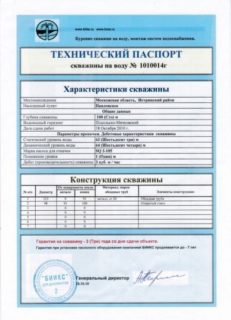
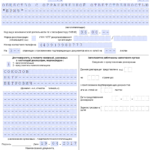
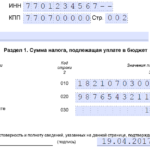

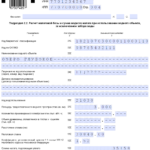








Yes, we have someone for what. They pump out the drives and take them to the forest in the ravine, but because it’s cheaper. I didn’t know that the official call for a car costs 5 thousand. But it doesn’t wake up to pump out one drive. If it doesn’t fill the top of the hatch Otherwise, the car will overturn. They add water to the station ... But they don't take them to the station. Because there they also take money for the drain. It's okay. They go to the forest under cover of night and pour all the sewage into the ravines. a neighbor so he squirts water from his reservoir into the grass in a landfill .. And this is more than one year .. And then the water in the well smells ... It's not clear what. But it smelled of gray at first and stopped. And the sechs smells differently well this one the year is not so. And in general, our water is not suitable for drinking. In it the lime of the broom is dissolved salts. It is cold transparent, but when it stands it becomes rusty. We collect it in the tank, after 2 days it becomes transparent. And we water it and wash in the bath ..Washing dishes. But from the city we carry water to drink and rinse the dishes ..
And so we do not have clean water. At least for 100 meters of a storm. It still wakes up with lime. It is cloudy and scum from it. It costs a pumping station, this is 120 meters, they say the depth ... days .. then nothing is removed only for throwing out the kettle if the electric one is worse ..
And so people should go to the dignity of pina, but in fact they do not go. They do not check anything ..
That's who's on what much. How they want and build cesspools .. Yes, the drives are pumped out wherever they want ... They are taken to the meadow in the thickets and in the forest they are taken to the ravines. Not only the horse-tree, but also garbage .. Construction waste is felled into the forest and even concrete is poured out .. Remains ...
If the state (represented by officials at different levels) believes that it is the master of all this, then it must be responsible for the pollution or lack of water on the site. I think this: once you take money for use, then answer for poor service.